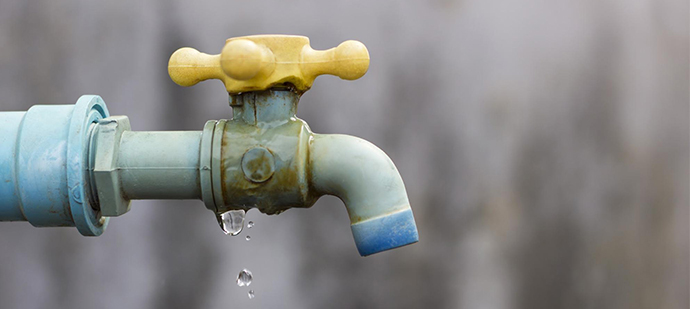How to Find and Repair Work Water Leaks-- A Comprehensive Guide
How to Find and Repair Work Water Leaks-- A Comprehensive Guide
Blog Article
The article author is making a few good points on the subject of Locating water leaks as a whole in this article directly below.

Early detection of dripping water lines can alleviate a prospective disaster. Aside from saving you money, it will minimize the irritation and frustration. The moment you discover a leak, calling your plumber for repair services is the very best solution. However, some small water leaks might not be visible. If you can not detect it with your nude eyes, here are some hacks that assist.
1. Examine the Water Meter
Every home has a water meter. Examining it is a surefire way that assists you discover leaks. For beginners, turn off all the water sources. Guarantee nobody will purge, use the tap, shower, run the cleaning equipment or dishwashing machine. From there, go to the meter and watch if it will alter. Because no one is using it, there ought to be no motions. That indicates a fast-moving leak if it moves. Also, if you find no changes, wait an hour or 2 and inspect back again. This suggests you may have a sluggish leak that might even be underground.
2. Examine Water Consumption
If you spot abrupt changes, in spite of your consumption being the same, it indicates that you have leakages in your plumbing system. An unexpected spike in your costs suggests a fast-moving leak.
At the same time, a stable rise monthly, despite the exact same habits, shows you have a sluggish leakage that's likewise gradually intensifying. Call a plumber to extensively check your building, specifically if you really feel a cozy location on your flooring with piping below.
3. Do a Food Coloring Test
When it comes to water usage, 30% comes from toilets. If the shade somehow infiltrates your dish during that time without flushing, there's a leak in between the container as well as bowl.
4. Asses Outside Lines
Don't neglect to inspect your outdoor water lines also. Examination spigots by affixing a yard hose pipe. Should water seep out of the link, you have a loosened rubber gasket. Replace this and make certain all links are tight. If you've got a lawn sprinkler, it will aid get it professionally analyzed as well as kept every year. One small leak can waste lots of water and also increase your water expense.
5. Analyze the scenario and inspect
House owners need to make it a practice to inspect under the sink counters and also also inside closets for any bad odor or mold and mildew growth. These 2 red flags suggest a leak so punctual attention is called for. Doing regular examinations, even bi-annually, can conserve you from a significant trouble.
Inspect for stainings and deteriorating as many devices and pipes have a life span. If you presume dripping water lines in your plumbing system, do not wait for it to escalate.
Early detection of dripping water lines can alleviate a possible calamity. Some tiny water leaks may not be noticeable. Examining it is a surefire means that aids you uncover leaks. One small leak can waste tons of water as well as increase your water costs.
If you suspect dripping water lines in your plumbing system, don't wait for it to rise.
WARNING SIGNS OF WATER LEAKAGE BEHIND THE WALL
PERSISTENT MUSTY ODORS
As water slowly drips from a leaky pipe inside the wall, flooring and sheetrock stay damp and develop an odor similar to wet cardboard. It generates a musty smell that can help you find hidden leaks.
MOLD IN UNUSUAL AREAS
Mold usually grows in wet areas like kitchens, baths and laundry rooms. If you spot the stuff on walls or baseboards in other rooms of the house, it’s a good indicator of undetected water leaks.
STAINS THAT GROW
When mold thrives around a leaky pipe, it sometimes takes hold on the inside surface of the affected wall. A growing stain on otherwise clean sheetrock is often your sign of a hidden plumbing problem.
PEELING OR BUBBLING WALLPAPER / PAINT
This clue is easy to miss in rooms that don’t get much use. When you see wallpaper separating along seams or paint bubbling or flaking off the wall, blame sheetrock that stays wet because of an undetected leak.
BUCKLED CEILINGS AND STAINED FLOORS
If ceilings or floors in bathrooms, kitchens or laundry areas develop structural problems, don’t rule out constant damp inside the walls. Wet sheetrock can affect adjacent framing, flooring and ceilings.
https://www.servicemasterbyzaba.com/blog/how-to-detect-water-leakage-in-walls/

Do you enjoy reading about Detecting hidden plumbing leaks? Post a remark further down. We'd be glad to know your thinking about this content. In hopes to see you back again in the near future. Do you know about someone else who is interested in the topic? Feel free to share it. Thank-you for taking the time to read it.
Report this page